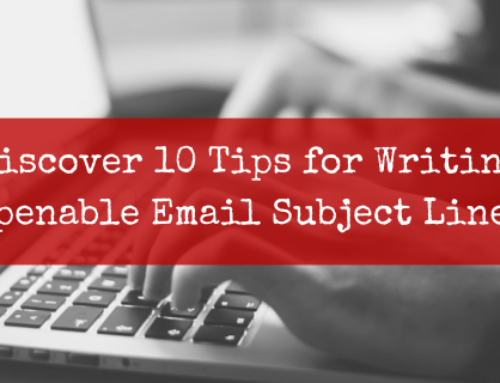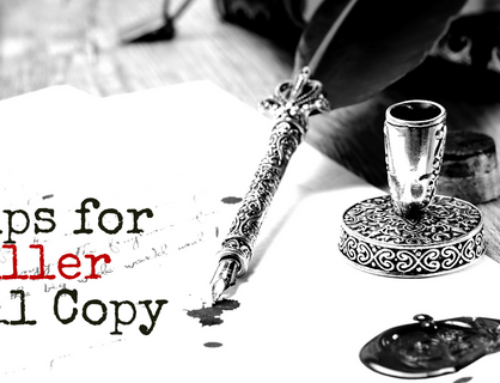As a business owner, you have a goal: sell your product or service to customers while establishing a relationship that results in repeat patronage. To accomplish that, you have a variety of tactics. If one of those tactics is email marketing, you may have heard of the email marketing funnel. This is the process of converting potential clients into a customer using email marketing. This might feel like an outdated tactic to some, but according to the Content Marketing Institute, 83% of B2B businesses still use email marketing.
You may, from experience, believe that email marketing is ineffective, but as with any other skill, you have to use it strategically. After all, if someone hasn’t bought a single product from you yet, why would they want to buy your company’s merch? This is where the email marketing funnel comes into play. It helps you sort leads into various groupings so you can intentionally target each step of the customer lifecycle. Through this process, you will build a relationship with your customer, converting them from a prospect, to a one-time purchaser, to a repeat consumer. Think of it as building a significant friendship.
Build Your Email List
What good is a funnel with no material flowing into it? No good at all, really. So you need to have leads flowing into the funnel. One way you can do this is to have opt-in forms on your website. These forms capture information like names, ages, email addresses, and so on. The key to getting this information is finding non-invasive ways of asking these questions. It should feel like getting to know someone, instead of an interrogation or a doctor’s visit. Imagine if you were introduced to someone and they immediately started grilling you about yourself. Not a very enjoyable experience, is it? Building an email marketing funnel is about patience.
A landing page is the best place for a form. This catches potential customers before they go anywhere else on your website. In turn, your click-tracker can inform you of what that person is interested in (yes, you should have your website’s click-tracker turned on). Pop-up forms are effective as long as they’re not obnoxious, so keep that in mind.
Welcome
The next step is to welcome your potential customer into the fold. Like introducing yourself to that person you’ve been crushing on, you don’t want to come on too strong. Be welcoming. Be friendly. Introduce yourself and the features of your product or service. You want them to get a strong feel for your brand. Do not—and I repeat DO NOT—ask them for anything. You don’t want to be the friend that only calls when they want something. This is a trust-building opportunity only.
Feed Them
Friends normally become friends because they have something in common, and those commonalities can produce hours upon hours of conversation. Friendship grows through conversation like this. This is where your content marketing and engagement kicks in. This is where you help educate your leads and gain their trust.
Providing leads with information pertinent to their interests not only helps them in their decision-making process, but also shows that you care about their experience. It is important to educate potential customers on your product/service, but don’t forget to tell them about your industry in general. Likely, these leads want to learn about the overall industry as well as your product. No one likes a friend who only talks about themselves, but people do like someone who shares similar interests and can provide compelling conversations about those interests. This gives you credibility in the eyes of your leads. Also, responding to a question shows that this relationship is a two-way street and that the lead is valued.
Conversion
It’s time for the ask. There’s no need to get the nervous butterflies; you’ve built a relationship and your lead trusts you. It’s not over yet, though. Leads may require a little motivation to make the leap. There are two ways you can go about motivating them. First, you can just offer your product. This can come in the form of an email talking about the product but including a call to action at the end. This email needs to retain the brand voice you have developed and not be pushy, but don’t be too shy to ask at this stage.
Another option is to offer a discount. According to a VoucherCloud study, 57% of participants said they wouldn’t have made a purchase without first getting a discount offer. It’s hard to get people to part with their well-earned money, but offering a few dollars off can help them justify the purchase. While you may be reluctant to drop your price, remember that this tactic can help you accomplish your end goal—repeat patronage. According to the same survey, 91% of participants said they would patronize the retailer again after using the discount.
Yet another way to provide value to yourself and your customer is to offer a discount for creating an account. That way you get information to help with the customer retention step of the process, and the customer gets a discount. It’s a win-win scenario.
Retention
So you’ve converted your lead into a customer. 70% of companies say it’s cheaper to retain customers than bring in new leads, and you’ve worked hard to convert your lead. An easy way to keep a consumer engaged is by offering them a loyalty reward program. 82% of consumers will continue to shop at a store that offers a loyalty program. This is not to say that you don’t need to continue to feed the funnel by finding new leads. It just means that repeat customers are your most valuable customers, and they should be treated as such. Think of a local store or restaurant. The regulars always get the best treatment because they’re friends of the establishment. You need to treat your online shoppers the same way.
Creating an email marketing funnel is a lot of work, but the benefits are very rewarding. Following the steps of creating the funnel is important because you aren’t just converting numbers or following a simple process, you’re building a valuable relationship with a human being. People want specialized interaction to make them feel important, just like any relationship. Building an email marketing funnel can help you accomplish just that.





